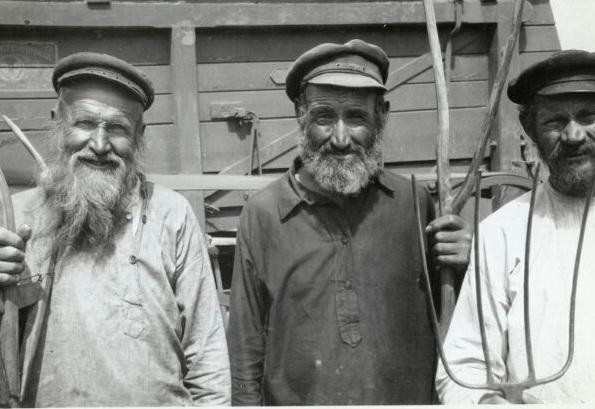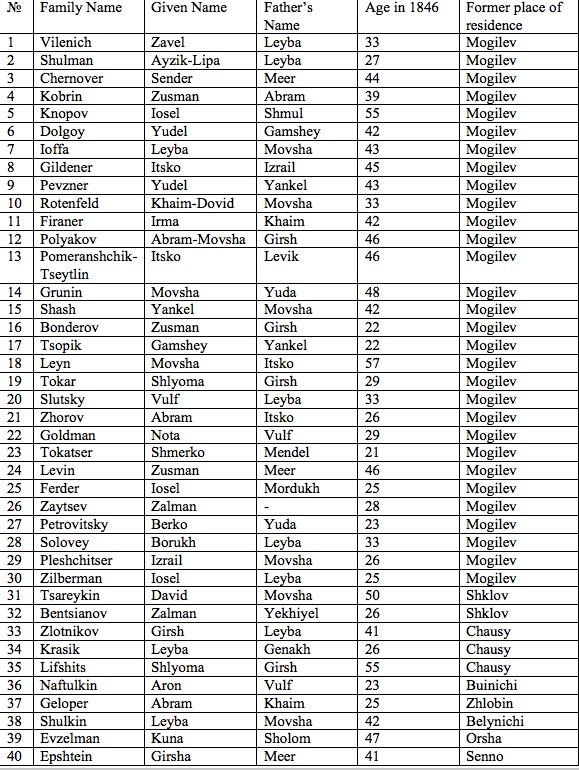In the mid-19th-century, one goal of the Russian government was to encourage Jews to work the land.
The government provided land in six guberniyas (provinces) of the Russian Empire for this purpose, including Yekaterinoslavskaya guberniya (today Dnepropetrovsk and Zaporozh’ye region in Ukraine).
One of these was the agricultural colony of Mezhirech. The Tzar provided many benefits for Jews who moved to these agricultural colonies. They received free land, government-built houses, no-interest government loans to buy cattle, paid moving expenses and, importantly, their sons were exempt from the 25-year army conscription.

Jewish residents of agricultural colony
In summer 1846, 40 Jewish families from the town of Mogilev and Mogilev guberniya set off on a two-week journey by horse to Yekaterinoslavskaya guberniya. When the group arrived, they discovered that their promised houses weren’t ready, and they were housed in peasant homes in nearby villages.
In fall 1847, the new houses were finally ready, a year later. The walls were constructed of clay, the roofs of dry grass. In spring 1848, the population, almost all adults, was sick with scurvy, while 30 others had died from various illnesses during the winter.
In 1853, another group of Jews from Mogilev guberniya joined the settlers, and the total population of Mezhirech was 372 residents. By 1890, this colony had became one of the most successful in the region. Each family lived in its own wooden house; each family had two or more cows. The colony also had its own synagogue, mikvah, Jewish day school and cemetery.
Here is a list of the heads of the first 40 Mogilev guberniya families who arrived in 1846:

Iosif
October 8, 2016
I have published a book in Russian re the history of Jews in Pogost – Zagorodsky, Brest region, The Republic of Belarus. Here is a brief annotation:
The book briefly describes the history of Jews in Belarus and three hundred years of epic history of the village Pogost (village Pogost – Zagorodsky, Brest region, The Republic of Belarus) from the first occurrence of the tenants of the village until the death of the Jews in Pogost – Zagorodskiy ghetto. There is a wealth of information about the names of inhabitants of the town collected by the author in the archives of Belarus. Author explores the previously unknown version of the origin of the names of the Jews, he brings up a large amount of statistical data and some little-known facts from the life of the Jews; the full text of testimony of Rivka Ёselevskoy on trial in Israel of Nazi criminal Adolf Eichmann in 1961. The book will be useful to the reader who is interested in the history of little Jewish man’s life in a small town on the background of the great events in the life of the Jewish people.
The book can be viewed online at:
https://drive.google.com/file/d/0B9VZm0W7apUnN2JDbEk5R3BJc2c/view?usp=sharing
I am looking for people who would be interested to help me to translate the book from Russian into English.